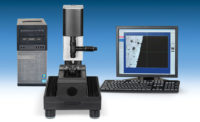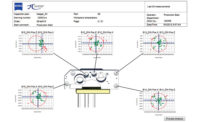PALO ALTO, CA-By introducing mobile, onsite services, the calibration services market is attempting to shake off the effects of a sluggish economy. The economic downturn had compelled end users of calibration services-the manufacturing industries-to think twice before getting their instruments calibrated.
New analysis from Frost & Sullivan, released in the report, North American Calibration Services Markets, reveals that this market generated revenues of $500.5 million in 2003. Total market revenue is expected to reach $759.9 million by 2010.
The report suggests manufacturers should optimize the use of their existing equipment rather than create downtime and increase basic operational expenses by sending out the instruments for calibration, especially when they are trying to fight off the effects of the slowdown.
The turnaround time can be reduced substantially if the calibration is done on-site, but only if the volumes are adequate and the applications critical. The onsite calibration will reduce downtime, save transportation costs for the customers and lower the risks in carriage.
It has also been noted that for certain critical applications, the market participants are offering zero downtime. The report suggests that calibrations services offering a 24 hours a day, seven days a week schedule could be the future of the industry.
"Customers keen to reduce calibration downtime prefer onsite calibrations to offsite calibrations and hence, greater thrust on onsite calibration will bring better profits to service providers," says Frost & Sullivan Industry Analyst Muthu Kumar.
Another positive impact of this downturn, according to the report, has been that manufacturers are devoted to becoming lean by downsizing their workforce and concentrating on core competencies. They are willing to outsource activities like calibration to third-party service providers. This outsourcing trend will prove to be one of the biggest market potentials for market participants.
Another offshoot of the economic downturn, according to the report, is the trend of shifting production facilities to low-cost countries to improve profitability-a trend manufacturing companies have not resisted. By moving to destinations in Eastern Europe and China, they have decreased the installed base of equipment in North America and taken business away from its calibration-services market.
The report suggests that market participants have something to gain from globalization; as manufacturers need to compete in the world market, they will be looking to ensure that their products meet international quality standards. This can eventually translate into demand for regular and periodic calibration of standards and equipment.
Frequent demand for calibration is vital in a market that has an excess of participants. Except for a few niche competitors in the aerospace and defense and physical and dimensional segments, most participants cater to general calibration applications, according to the report.
In such a fragmented market, it becomes difficult to maintain a competitive pricing strategy. Only accredited laboratories will be able to justify their high calibration charges with their elaborate but mandatory certifying process and the quality stamp.
"Most customers prefer their instruments to be calibrated at an accredited laboratory," says Kumar. "However, if service providers were to adopt a two-pronged strategy of providing both accredited laboratory services as well as lower-cost, non-accredited calibration service for non-critical applications, they will be able to retain more customers."


